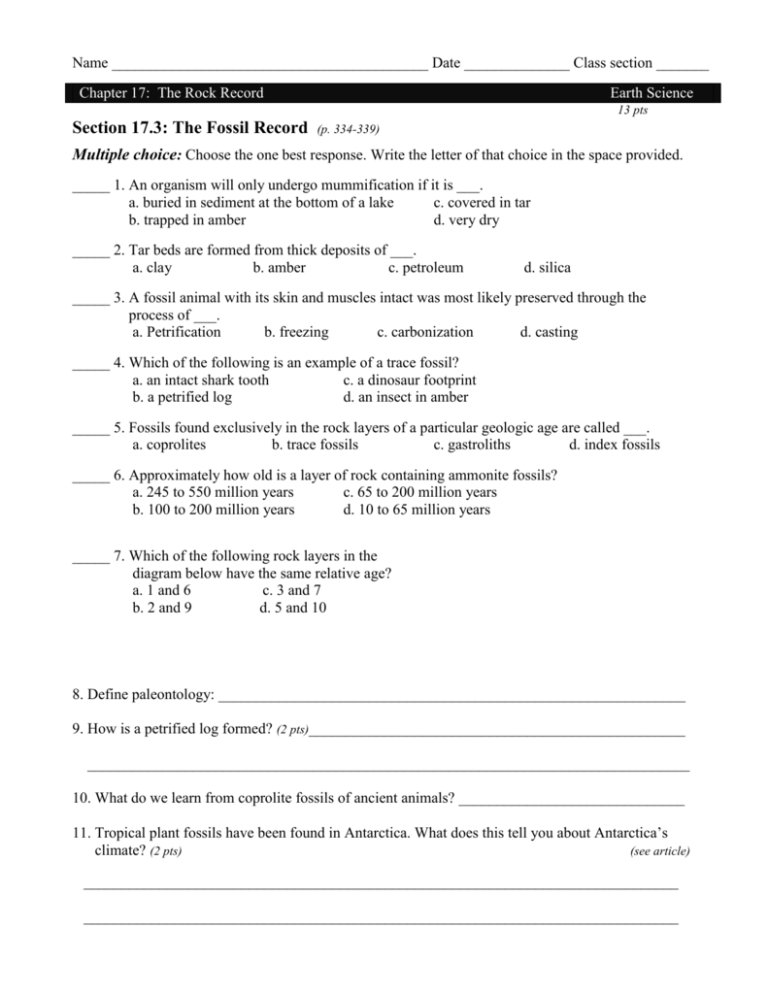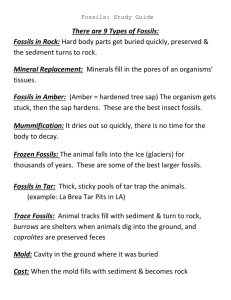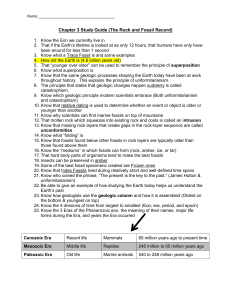17.3 w.s. - North Mac Schools
advertisement

Name __________________________________________ Date ______________ Class section _______ Chapter 17: The Rock Record Earth Science 13 pts Section 17.3: The Fossil Record (p. 334-339) Multiple choice: Choose the one best response. Write the letter of that choice in the space provided. _____ 1. An organism will only undergo mummification if it is ___. a. buried in sediment at the bottom of a lake c. covered in tar b. trapped in amber d. very dry _____ 2. Tar beds are formed from thick deposits of ___. a. clay b. amber c. petroleum d. silica _____ 3. A fossil animal with its skin and muscles intact was most likely preserved through the process of ___. a. Petrification b. freezing c. carbonization d. casting _____ 4. Which of the following is an example of a trace fossil? a. an intact shark tooth c. a dinosaur footprint b. a petrified log d. an insect in amber _____ 5. Fossils found exclusively in the rock layers of a particular geologic age are called ___. a. coprolites b. trace fossils c. gastroliths d. index fossils _____ 6. Approximately how old is a layer of rock containing ammonite fossils? a. 245 to 550 million years c. 65 to 200 million years b. 100 to 200 million years d. 10 to 65 million years _____ 7. Which of the following rock layers in the diagram below have the same relative age? a. 1 and 6 c. 3 and 7 b. 2 and 9 d. 5 and 10 8. Define paleontology: ______________________________________________________________ 9. How is a petrified log formed? (2 pts)__________________________________________________ ________________________________________________________________________________ 10. What do we learn from coprolite fossils of ancient animals? ______________________________ 11. Tropical plant fossils have been found in Antarctica. What does this tell you about Antarctica’s climate? (2 pts) (see article) _______________________________________________________________________________ _______________________________________________________________________________





![F3-4 Study Guide for QUIZ [1/28/2016]](http://s3.studylib.net/store/data/006814899_1-56a576b1a51c0f876f28a8da0f15de89-300x300.png)





